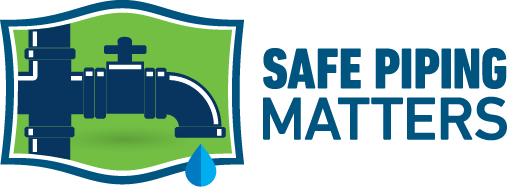Burned PVC Pipes Contaminate Air & Water
A new study released by chemistry researchers at Middle Tennessee State University expands our understanding of risks posed by PVC combustion in fires. The tests demonstrated that burning pipes emit many contaminants that can negatively impact human health. Using infrared spectrometry and gas chromatography-mass spectrometry, researchers found a host of chemicals at varying levels of toxicity, including carbon monoxide, formaldehyde, benzene, chlorobenzene, hydrogen chloride, chlorine dioxide, methyl chloride, methylene chloride, allyl chloride, vinyl chloride, ethyl chloride, 1-chlorobutane, tetrachloroethylene, 1,3-butadiene, methyl methacrylate, and acrolein.
The research also documents the effects of exposing water to damaged PVC piping, with results that have “significant implications for understanding the benzene contamination of drinking water in the aftermath of wildfires that burned polymer pipes in California. “The study identified 40-60 PVC pipe leachates (substances the pipes infused into deionized water over a period of a week), most of which were long-chain hydrocarbons such as tetradecane, hexadecane, octadecane, and docosane.
The study urges that the presence of plastic piping (HDPE, PP, PVC) in areas prone to fire risks creates “serious impacts on environment, public health and infrastructure.” In Paradise, the estimated cost of water pipe repair and replacement resulting from contamination from PVC pipes is 300 million dollars. Similar to other drinking water disasters like those in Flint, Michigan, and Newark, New Jersey, residents were advised not to drink, cook, or bathe in water from the tap, as they all posed serious risks to health. In Santa Rosa, CA, the entire underground water-delivery system became contaminated with benzene.
Researchers found that plastic piping causes “unprecedented problems of air and water pollution that might lead to adverse human health effects via smoke inhalation and water consumption.”
The science speaks for itself: Carbon monoxide, benzene, and harmful chlorinated components have no place in our lungs, or in our water supplies. It’s a matter of public health and public safety.
Despite the body of research demonstrating the risks, along with warnings from firefighters and labor organizations, municipalities are still considering PVC pipes for large-scale pipe replacement projects, and residential and commercial builders continue to install them in residential and commercial construction. This study joins a growing body of evidence demonstrating why public policy and building codes must change to better protect public health and safety.
Read the full study.
Safe Piping Matters thanks Ngee-Sing Chong, Saidi Abdulramoni, Dwight Patterson, Healther Brown, and the University of Middle Tennessee for their research and contribution to information and awareness on safe piping.
